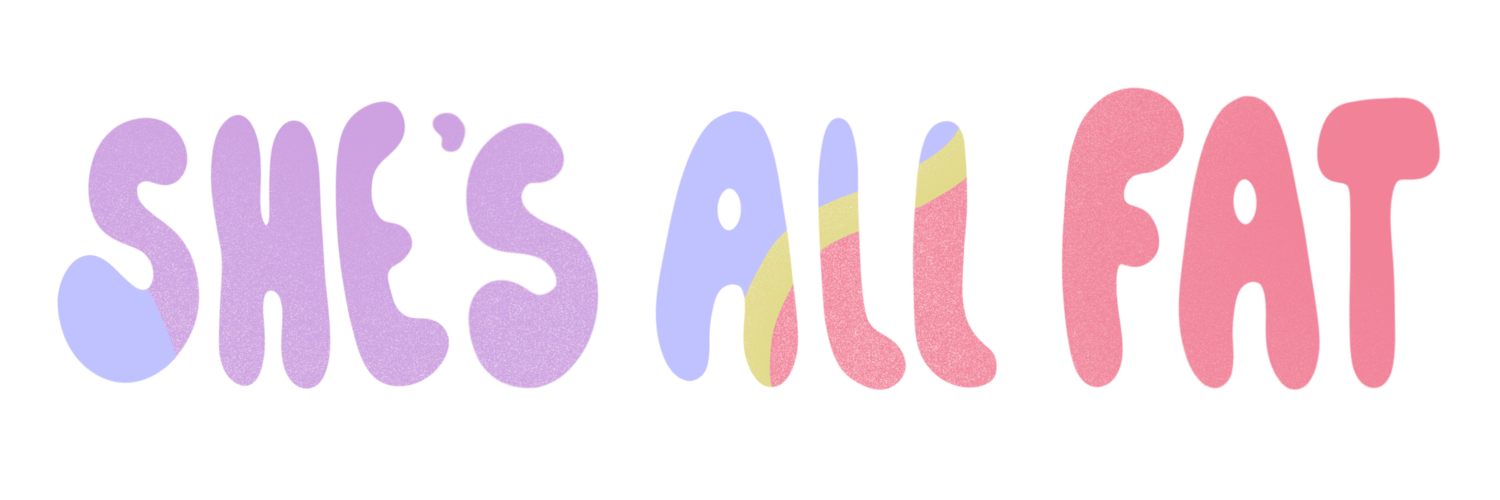Click here for a transcript of this episode.
In this episode, we’re talking with Sophie Williams, AKA OfficialMillennialBlack on Insta, about her upcoming book, not centering whiteness, and the love triangle between fatphobia, racism, and misogyny.
Bookclub: Fearing the Black Body / Black Owned Bookstores
Here are some more questions and thoughts to guide your reading and reflection of the first two chapters of Sabrina String's Fearing the Black Body:
First of all, I wanted to give you some thoughts on how to approach a more academic book, if you're new to or unfamiliar with this kind of reading! 1. If you run across words you don't know, feel free to look them up! Approaching a more academic text like this is a balance of looking things up and using context clues to noodle out what's going on and accepting you might not understand every sentence exactly. 2. Make sure you read the intro! It's a little dense, but it's a great layout of the overall argument the book will make and the plan for that argument, which helps me situate my reading and helps with those context clues. 3. Look at endnotes! They can be both fun, interesting, and helpful in exploring a text like this. Note 20, for example, gives you a handy list of other books about fatness to read. Endnotes can also give you more rich detail that the author wanted to share but doesn't quite fit in the sequential steps of the argument being made. 4. Don't hesitate to make notes of things, concepts, sentences you don't understand or don't remember and might be interested in further reading or googling of! I spent a little time looking at some of the artists mentioned in Chapter 1 on wikipedia and google images, for example. Okay, now questions - send us your answers to these, if you'd like to be featured!
1. Have you ever noticed a focus on "concerns over ascetics, not aesthetics" (p.63) in portrayals of the fatness or thinness of men? How might our modern imaginings of a lean, lanky academic/intellectual character play into this? (I hope this idea is tracked more throughout the book, it's a super interesting one!)
2. If you've ever wandered through a museum from art of this time period, or looked at it in books, have you ever been presented with this kind of lens? What are the general ways you've been taught to look at artworks that are missing a lens of racial analysis?
3. Can you sum up the arguments being made in chapters one and two in a few sentences?
4. How does it feel to view cultural attitudes towards fatness as having changed over time, instead of from within the current cultural moment which seeks to impose a universality on our fatphobia?
Take a further look into the types of Renaissance paintings that Dr. Strings analyzes in Chapter 1. Then, take out a paper and draw yourself. Think about what you focus on, and why.
Journal about how art and storytelling play a role in perpetuating anti-Black racism in the Chapter 2. How has this changed from then till now? How has it remained the same? In what ways are we complicit?
Resources on “Womxn” vs “Women”: this twitter thread / this video on the origin of the phrase “women of color” / the body is not an apology article /
The Meat of It: Sophie Williams / Millennial Black / Insta post that started it all / Slay in Your Lane / All the Women Are White, All the Blacks Are Men, But Some of Us Are Brave / Candice Brathwaite / Bizarre & Racist History of the bmi / How we fail black patients’ pain / Nonwhite patients get less pain relief in US emergency rooms / post: how black people in the UK are disproportionately being affected by COVID / BAME Britains twice as likely to die from COVID / Govt Censorship on BAME report / how to cope if you're a black woman and feeling exhausted / the trevor project / pre-order millennial black
Sophie’s picks: anti-racist ally / keeping up the momentum / for black women who are exhausted
Call to Action: Read “What, to Black Lives, is the 4th of July?” by Antwan Herron.
Read, reflect, and share this piece over this weekend — the 4th. Remember that when we call July 4th “Independence Day,” who that Independence included.
“This Fourth of July is yours, not mine. You may rejoice, I must mourn. To drag a man in fetters into the grand illuminated temple of liberty, and call upon him to join you in joyous anthems [is] inhuman mockery and sacrilegious irony.” - Frederick Douglass
Our advertisements are done in partnership with Acast. If you’d like to sponsor our show, you can email biz@shesallfatpod.com or go to Acast.com and tell them we sent you!
Editing and Sound Design by Laila Oweda.
If you’d like to support the work we do, you can join our Patreon by visiting patreon.com/shesallfatpod. When you pledge to be a supporter, you’ll get all sorts of goodies like our Patreon-only Facebook Group and extra content.
If you are interested in the perks available to our Patrons but you are not able to afford the monthly contribution, apply for our Patreon Scholarship! If you are a member of the Fatmily interested in becoming a sponsor, contact us here.
Questions/Comments/Concerns? Email fyi@shesallfatpod.com or call us at (213)-375-5023 to leave a voicemail.
Follow us! Twitter / Instagram / Get updates!
You can find us on: Apple Podcasts, Spotify, Google Play, Stitcher, Pocket Cast, PlayerFM, and CastBox.
Need something else? Check out our site: shesallfatpod.com
